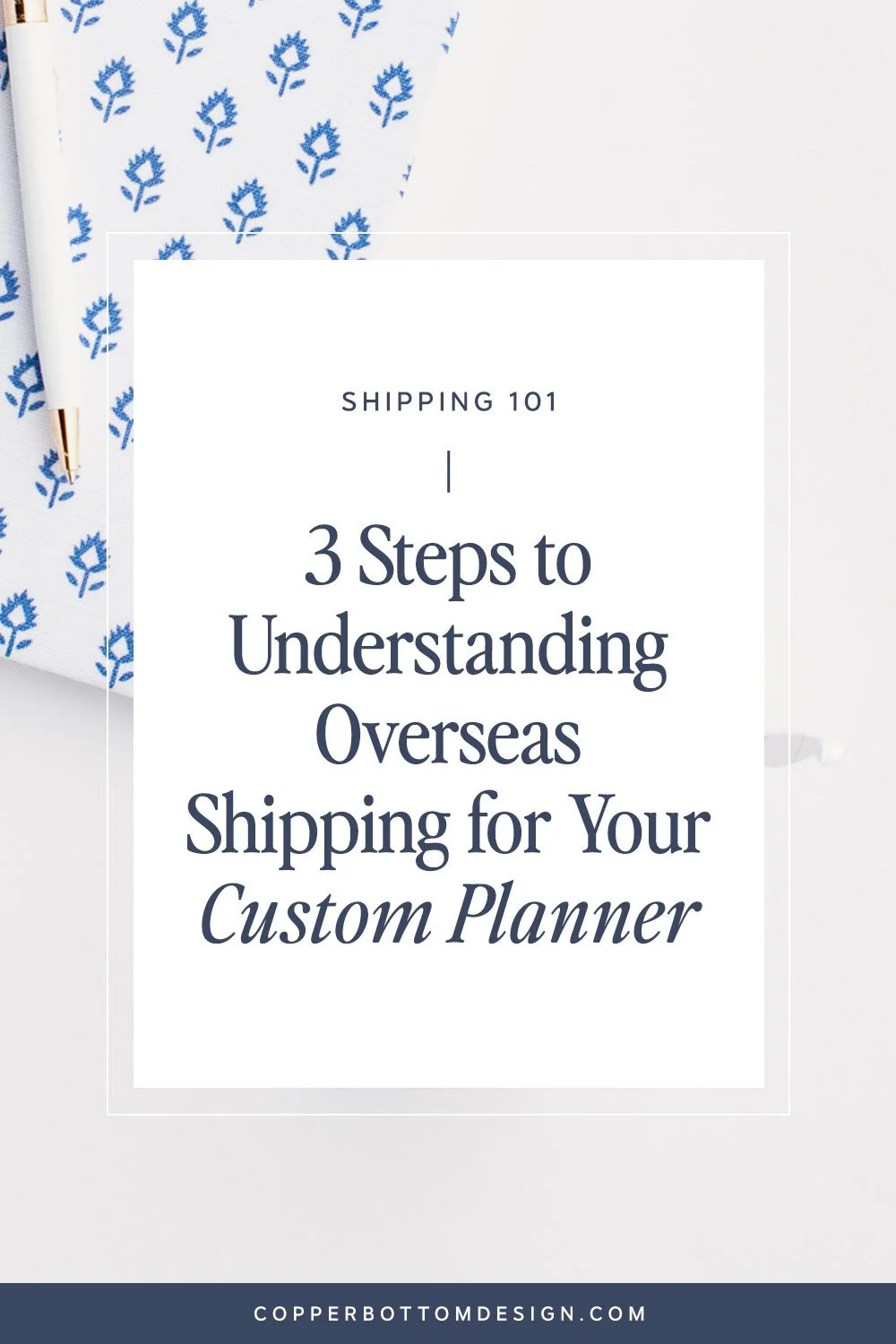3 Steps to Understanding Overseas Shipping for Your Custom Planner
Let’s take some time to put some clarity and understanding behind one of the BIGGEST hangups people generally have around producing custom products internationally: shipping.
You worked diligently to create a gorgeous custom planner that you can’t wait to share with the world … but how do hundreds or thousands of that finished product get from the factory’s hands to your doorstep?!
We’re going to break down that barrier, ease your mind, and answer some questions once and for all.
When it comes to shipping your custom planner and getting it safely into your hands — or the hands of your preferred destination — there are a three primary steps involved that you can expect in this process:
Step 01: Request Pricing
About two weeks before production is complete, you’ll need to request shipping prices to your final destination. This can be done a couple of different ways:
(A) Request pricing directly from your factory. This is the easiest route because they will arrange everything for you from start to finish.
(B) Contact a freight forwarding company on your own and have them arrange shipping for you. Regardless of who you choose, it’s always preferred to get more than one quote to ensure you’re receiving fair pricing for your shipment.
A note on pricing: Shipping costs change frequently — every 2-4 weeks — similar to gas prices. You can request pricing earlier in order to budget your expenses, but use that pricing as a ballpark, knowing the price may change.
Step 02: Book + Arrange Payment
Book shipping with your preferred vendor. If you're booking with your factory, payment will be due before the shipment departs. If you’re booking with a freight forwarder on your own, payment will be due once it arrives at the port in the U.S.
Pro Tip: You’ll likely experience a few new terms through the overseas shipping process, no matter which route you choose. Here are two essential shipping terms you’ll need to know:
Deliver Duty Paid (DDP): This means that the seller (the factory/manufacturer) is responsible for all costs associated with the shipment, including tariffs. This is a good option to choose if you are arranging shipping with your factory.
Free On Board (FOB): This means that as soon as your order leaves the seller’s location (the factory), their part is done, and the sale is complete. The buyer (you) are then responsible for all fees associated with getting the goods to you. This is most likely the option you’ll choose if you are arranging shipping on your own with a freight forwarder.
Step 03: Know Your Timeline
Ocean shipping from China to the west coast generally takes about three weeks. Shipping to the east coast takes about four weeks.
Once the goods reach the U.S. port, it can take 3-10 days for your products to become available; this depends on customs clearance and how quickly all of the cargo on the ship moves through that process.
Depending on where your final destination is, ground shipping from the port can take an additional 1-2 weeks.
Note: These are generalized timelines. Since the pandemic, this can take longer due to port congestion and ground shipping delays. Check in with your shipping vendor frequently to stay aware of any delays that pop up along the way.
As you can see, the entire shipping process can take around six weeks. However, I always recommend planning for an eight-week timeline to have the shipment officially delivered to your door.
It’s better to pad your schedule with a couple of extra weeks in case of issues along the way so you can better plan the next steps within your business and aren’t feeling the stress of being rushed in the final hour.
Feeling ready to move production overseas?
I created a streamlined checklist so you know exactly what you need to do before making the leap to overseas manufacturing . . . and it’s available now at the link below.

